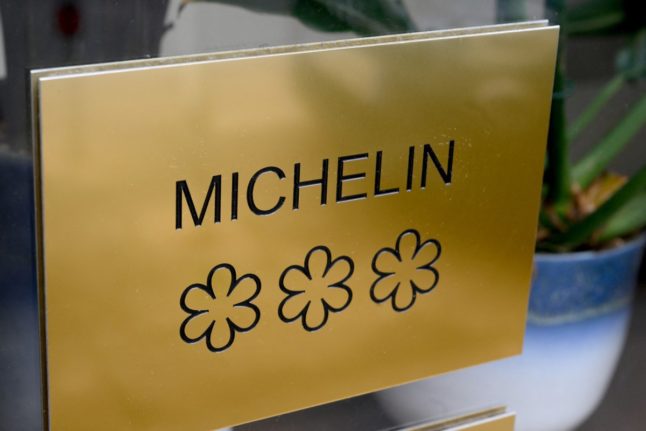56 new French restaurants, located all over the country, were added to the 2024 edition of France’s ‘Bib Gourmand’, – restaurant guide to the best value-for-money restaurants.
It comes under the Michelin brand, but unlike the standard guide of fabulous but pricey Michelin-starred restaurants, the Bib Gourmand focuses on value offerings.
To be included in the list, the restaurant should offer full meals (excluding drinks) at a price of around €40 or less.
According to the Michelin guide, there is “no set formula for a ‘Bib’ restaurant, they are all unique and can vary greatly from one place to the next.”
READ MORE: 8 tips for finding a good restaurant in France
The guide does highlight that ‘Bib’ restaurants tend to utilise a “simpler style of cooking, which is recognisable and easy-to-eat.”
The listing is available in several different countries, with the French version including several different styles of restaurants, many of them offering a modern or fusion take on French classics from each of the 13 mainland regions.
The Local has picked six that made the list this year, but you can find all ‘Bib Gourmand’ restaurants on the Michelin website with the option to search by area to find something delicious and affordable near you.
Aux 2 K – Paris
Located in the 9th arrondissement, the restaurant is named for its two owners, Kagy and Kinoshita. Bib Gourmand describes it as giving a “few nods to the south-west”. Their speciality is a dish of roast pigeon and smoked eel with shallot in a salmis sauce.
Their lunch menu is “at an unbeatable price”. High marks for service, which was “delivered with great care and finesse”, according to the guide.
Prices – The lunch menu, available on weekdays, costs €29 and it includes starter and main course or main course and dessert. The evening and weekend menu, including starter, main course and dessert, costs €41.
They also offer a 6-course tasting menu for €68, with a five glass wine pairing for €38.
You can make a reservation on their website.
Le Cochon qui Boit – Lyon
Promising that all vegetables come from two local organic growers, and meat coming from well-bred animals who were directly purchased from farmers, this Lyon-based restaurant is located right along the Rhône in the 1st arrondissement.
The Bib Gourmand recognised the restaurant for its tasty meat which is “according to the special of the day, with parsnips and leeks”, as well as daring combinations such as “braised Jerusalem artichokes, onion purée and coffee sabayon”.
The guide summed it up as offering “well-sourced local produce cooked to perfection, washed down with the finest wines.”
Prices – The evening and weekend menu (starter, main course, and dessert) goes for €39. Meanwhile, weekday lunchtimes offer a dish of the day for €16, or a two-course menu for €25.
More information available on their website.
Chez Loustic – Toulouse
A ‘modern bistro with an industrial feel’, Chez Loustic is located in the Saint-Cyprien neighbourhood in Toulouse.
The Bib Gourmand highlighted the chef, who won over their staff “with his generous fillet of sea bream on braised leeks, spinach cream and parsnip chips, as well as the poached peach and rhubarb with cardamom cream.”
The guide described food as ‘finely prepared’ and ‘market-fresh’.
Prices – They have a starter/main course or main course/dessert option for €20, as well as a ‘menu’ (starter/main course/dessert) for €23 from Tuesday to Friday.
More information and reservations available on the website.
Bibendum – Avignon
A restaurant, wine bar and cocktail bar all in one – Bibendum’s menu is contemporary, utilising fresh, seasonal ingredients with a focus on Mediterranean recipes.
The Bib Gourmand specifically references dishes like the “roast white asparagus, light foaming Comté, torrefied cumin and pancetta” and the “pearlescent cod, purée of sweet potatoes and beurre blanc” which stand out, as well as the “apricot and almond financier dessert.”
Prices – The lunch menu is available from Tuesday to Friday, with a main course at €17, and a lunchtime menu on offer for €29.
Their evening ‘menu’ is available for €39, and individual main courses cost between €20-€30.
More information on their website.
Racines – Bordeaux
Daniel Gallacher, the Scottish lead chef was self-taught, bringing an ‘inventive’ and ‘far from conventional’ approach to his menu.
The Bib Gourmand describes the restaurant as having a modern bistro feel, with dishes that are “fresh and meticulous”, noting the “sea bream marinated in a green, herbaceous infusion”.
Prices – The lunch menu (Tuesday to Friday) is priced at €25, and €35 on bank holidays and Saturdays. As for the three-course dinner menu, that is priced at €40 per person.
Reservations and seasonal menus available at their website.
Sème – Saint-Pair-sur-Mer, Normandy
A lively bistro with “eclectic decor”, the menu at Sème focuses on “delicious cuisine firmly rooted in tradition.”
“Seasonal, local and Norman products are used,” according to the Michelin guide, highlighting the “iconic rack of salt-meadow lamb.”
With a lunch menu that changes daily, visitors are sure to have a unique experience.
Prices – The five-course ‘discovery’ menu is priced at €46, while the three-course ‘Sème’ menu is €38.
More info online here.



 Please whitelist us to continue reading.
Please whitelist us to continue reading.
Member comments